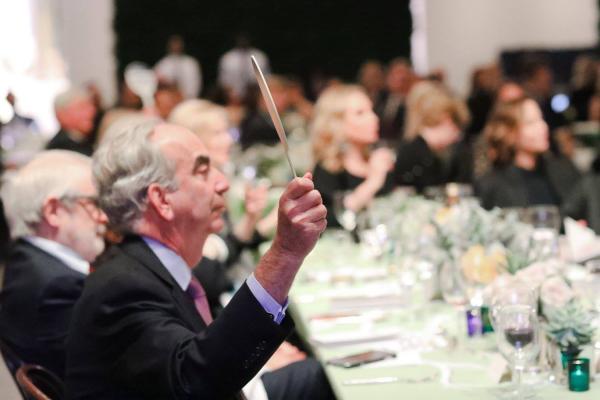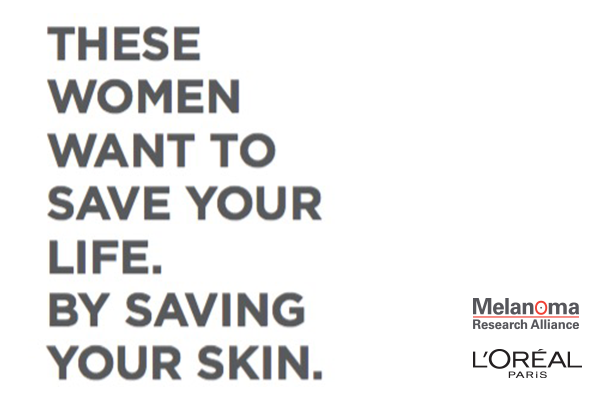News
Changing the Status Quo: Four Landmark Studies and their Implication for Melanoma Treatment
By Cody Barnett, MPH, MRA Senior Director of Communications & Patient Engagement | 13 November 2017 In News, Science
The crown jewel of the Melanoma Research Alliance has always been—and will always be—good science. Through science, we not only gain a better understanding of melanoma, but the ability to translate that understanding into better treatments, which in turn lead to a better quality of life for people with melanoma. At MRA, solid scientific leadership is at the forefront of everything we do. That’s why the MRA Board of Directors was thrilled to hear a presentation by fellow Board member and world-class researcher, Dr. Suzanne Topalian, on four landmark studies and their implications for melanoma treatment.
MRA Raises Millions of Dollars for Groundbreaking Melanoma Research
By Cody Barnett, MPH, MRA Senior Director of Communications & Patient Engagement | 5 November 2017 In Allies & Partnerships, Events
Normally, when people are at a Sotheby’s auction, they come to bid on beautiful and rare art. On Nov. 2nd, however, more than 240 people came together at Sotheby’s Headquarters in New York City to raise their paddle in the fight against melanoma. Together, participants raised over $20 million to further advance melanoma research.
“Seeing his Family Grow-Up Thanks to the Promise of Clinical Trials”
By Cody Barnett, MPH, MRA Senior Director of Communications & Patient Engagement | 10 October 2017 In Melanoma Stories
In August 2012, T.J. Sharpe walked into the emergency room with a fever. He’d been ill for a couple of days and didn’t want to get his four-week old son sick if he could avoid it. Sixteen days later, he left a full 30 pounds lighter and with a stage IV melanoma diagnosis.
Safe and Sound: Balancing Safety with Innovation in American Sunscreens
By Cody Barnett, MPH, MRA Senior Director of Communications & Patient Engagement | 10 October 2017 In Allies & Partnerships, Policy, Prevention
Currently, Americans have access to 16 sunscreen active ingredients approved by the Food and Drug Administration (FDA) to prevent skin cancer. The last time a new OTC (Over the Counter) sunscreen ingredient was added to the FDA sunscreen monograph was 1999. Meanwhile, Europeans have access to 29 sunscreen active ingredients. In the United States there are currently eight new sunscreen ingredients that are pending FDA review, which have been used in Europe – many for over ten years. These new, and potentially better, active ingredients could allow sunscreens to last longer and provide better full spectrum coverage that could help us reverse trends of increasing melanoma incidence in this country. Unlike in Europe where sunscreens are classified as cosmetics, in the United States the FDA is required to evaluate all active ingredients in sunscreens as OTC drugs. Meaning, that all U.S. sunscreen ingredients must be found generally recognized as safe and effective (GRASE) in the same manner as other OTC medications. The FDA says that this is critical to keeping us safe, but is it possible to balance innovation and safety?
Are Nanoparticles the Answer to the Question: Is it Working? An Interview with MRA Young Investigator, Dr. Ashish Kulkarni
By Cody Barnett, MPH, MRA Senior Director of Communications & Patient Engagement | 4 October 2017 In Science
When we think about cancer researchers, we don’t always think of engineers. Dr. Ashish Kulkarni proves that maybe, we should. His pioneering work as a chemical engineer is helping us answer the critical, yet difficult to answer question that is at the forefront of every patient’s mind as they start treatment: ‘is it working?’
‘Practice Changing’ Results Hint at New Adjuvant Therapy Treatment Options
30 September 2017 In Treatment
Adjuvant treatment is used in addition to tumor removal e.g. via surgery or radiotherapy to help delay or prevent the recurrence of melanoma. It is often recommended for high-risk melanoma (defined as melanoma deeper or thicker than 4mm thick at the primary site or involves nearby lymph nodes). Approved adjuvant therapies in melanoma include interferon and, more recently, ipilimumab. But neither of these approaches is wholly satisfying since relatively few patients appear to benefit and side-effects are a major factor.
A Mother’s Perspective: New Options for Pediatric Melanoma
By Cody Barnett, MPH, MRA Senior Director of Communications & Patient Engagement | 6 September 2017 In Melanoma Stories, News, Treatment
When Cheryl Trocke’s nine-year old son Graham was diagnosed with melanoma four years ago, she quickly learned that when it comes to kids, there were no great treatment options and that care can vary greatly based on where your child is treated. After surgically removing the primary tumor, Graham’s doctors suggested a treatment plan of ‘wait and see.’
Measuring Progress: Skin Cancer Prevention in the United States
By Cody Barnett, MPH, MRA Senior Director of Communications & Patient Engagement | 6 September 2017 In News, Prevention, Science
On July 29 2014, Dr. Boris Lushniak, the then acting U.S. Surgeon General at, issued a landmark call to action when he declared skin cancer as a major public health problem. He called on everyone, from government agencies to community-based organizations to schools to come together to increase awareness of skin cancer and ways to reduce risk. Since the Call to Action, The Centers for Disease Control and Prevention (CDC) has released an annual report each year documenting progress, celebrating success, and identifying areas where improvement is needed. The key areas of the Call to Action and the update from the CDC 2017 Progress Report are highlighted below.
Doubling Down: Brandon Barniea Bets Big on Combination Therapy
By Cody Barnett, MPH, MRA Senior Director of Communications & Patient Engagement | 6 September 2017 In Melanoma Stories, Treatment
Brandon Barniea didn’t believe he needed to visit doctors. The athletic 35-year-old had always been healthy – even when his wife and two kids were sick at home with the flu, he would miraculously avoid falling ill. So, when he found what felt like “beads” in his neck, reality came crashing in; following a biopsy, he was diagnosed first with stage III melanoma in August 2015 and later that year it progressed to stage IV.
L’Oréal Paris USA-MRA Team Scientists shed light on how melanoma spreads
By Kristen Mueller, PhD | 29 August 2017 In Allies & Partnerships, Science, Treatment
MRA is extremely proud of the 289 investigators we have funded over the last decade and the exciting advances they have made toward ending suffering and death due to melanoma. While we can never highlight all of them at one time, we’re excited in this blog to highlight the work of the L’Oreal Paris USA sponsored MRA Team award.









